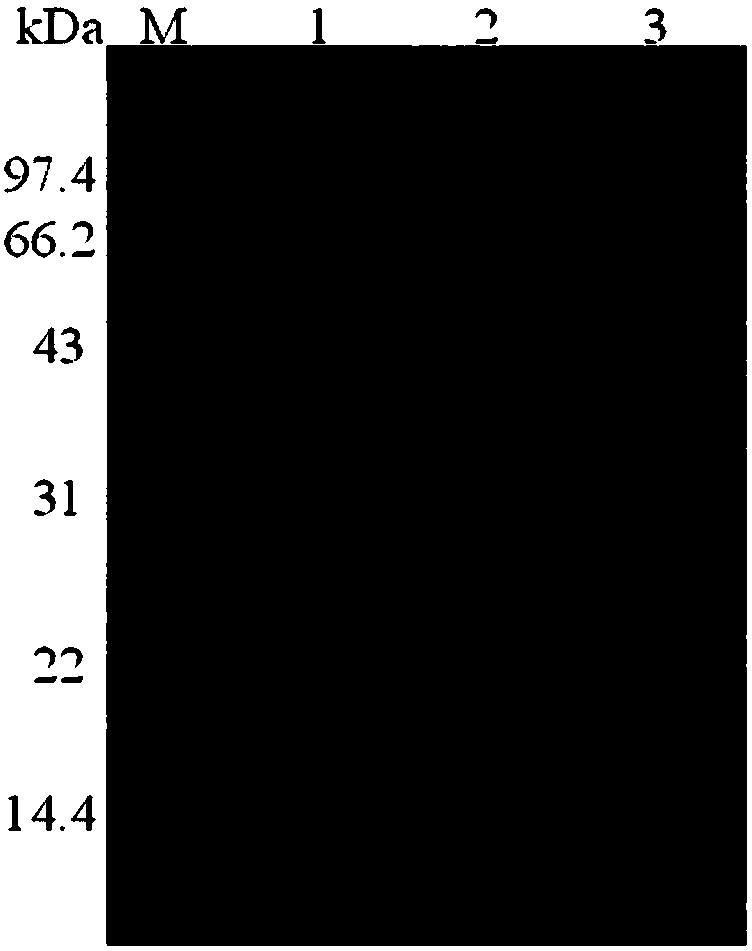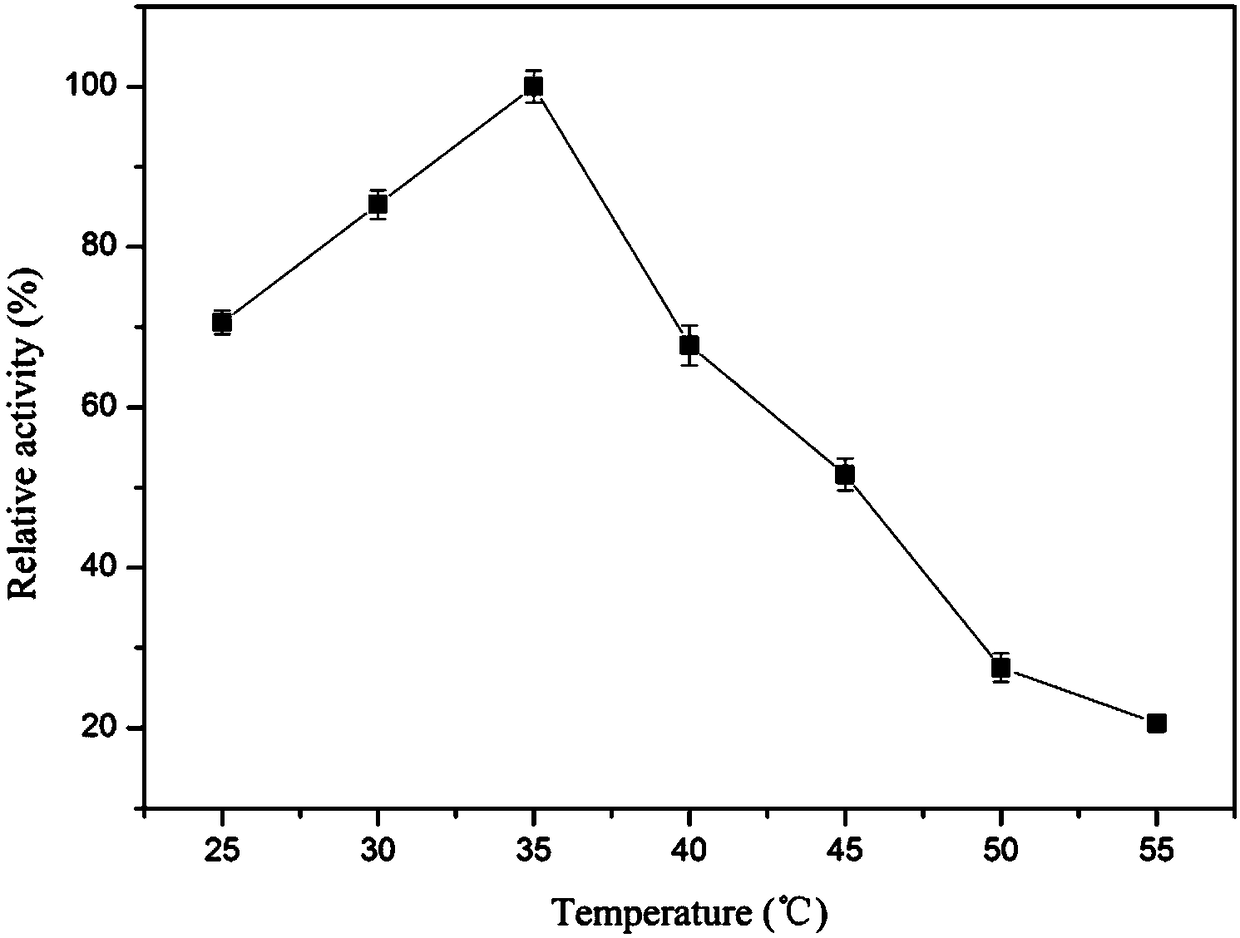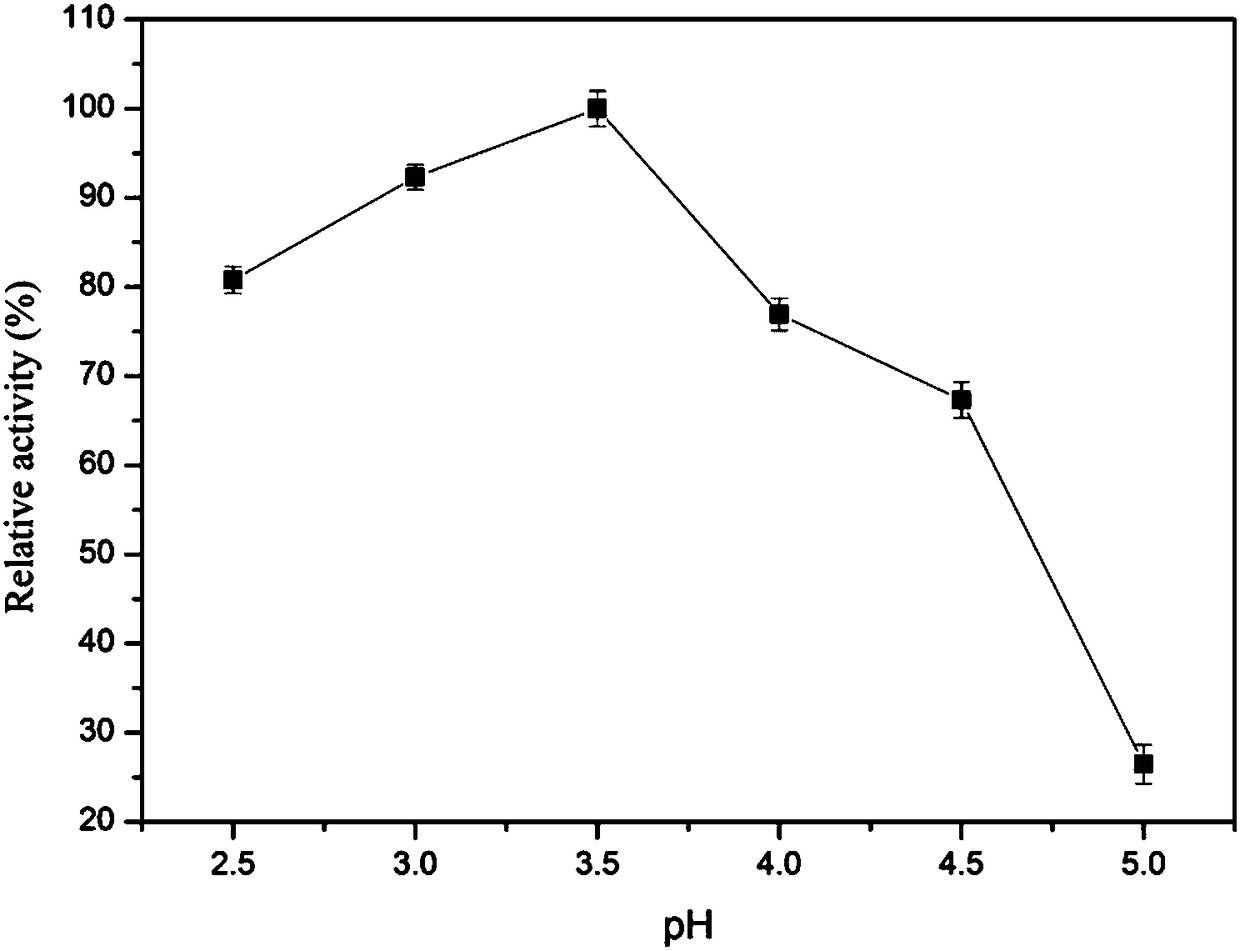A kind of chitosanase csn4 and its coding gene and application
A chitosanase, catalyzing chitosan technology, applied in application, genetic engineering, plant genetic improvement and other directions, can solve the problems of limiting the exploration and utilization of microbial resources, breeding of rare chitosanase strains, etc. Prospects for industrial application, mild reaction conditions, high activity effect
- Summary
- Abstract
- Description
- Claims
- Application Information
AI Technical Summary
Problems solved by technology
Method used
Image
Examples
Embodiment 1
[0022] Example 1. Obtaining the gene csn4 derived from deep-sea silt chitosanase CSN4
[0023] The method for obtaining the gene csn4 of chitosanase CSN4 of the present invention includes the following steps:
[0024] (1) Construction of a deep-sea silt metagenomic library
[0025] Take 10g of deep-sea silt samples collected and apply Epicentre's Meta-G-Nome TM DNA IsolationKit, operate in strict accordance with the instructions to extract and purify sample DNA.
[0026] Take appropriate amount of purified DNA and use Epicentre's CopyControl TM Fosmid LibraryProduction Kit with pCC1FOS TM Vector vector is ligated, and the ligation solution is packaged and transferred into EPI300TM-T1R E.coli host bacteria. Then spread it on a plate containing 12.5 mg / L chloramphenicol and culture it overnight at 37°C; wash the colonies on the plate with sterile LB, add glycerol (20%, v / v) and store at -80°C.
[0027] (2) Screen positive clones of chitosanase
[0028] Spread the preserved bacterial...
Embodiment 2
[0040] Example 2. Expression and purification of recombinant chitosanase CSN4
[0041] The recombinant plasmid csn4 / pET-28a in Example 1 was transformed into E. coli BL21 (DE3) according to conventional methods to obtain a genetically engineered strain for producing chitosanase CSN4.
[0042] The above-mentioned genetically engineered strains were inserted into LB medium and cultured at 37°C to the logarithmic growth phase, IPTG was added to a final concentration of 0.1 mmol / L, and the culture was continued at 20°C for 20 hours. The cells were collected by centrifugation, washed with saline, and NPI-0 buffer (50mM Na 2 HPO 4 , 0.3M NaCl, pH 8.0) suspended. Then, ultrasonically break in an ice water bath (power 200-400W, work 3s, gap 5s, ultrasonic 20min), centrifuge to collect the supernatant, which is the crude enzyme solution of chitosanase CSN4. The crude enzyme solution contains recombinant protein, namely chitosanase CSN4.
[0043] The recombinant chitosanase CSN4 was purified...
Embodiment 3
[0044] Example 3. Enzymatic properties detection of recombinant chitosanase CSN4
[0045] The chitosanase CSN4 pure enzyme prepared in Example 2 was diluted with citrate buffer (100mM, pH3.5), and then reacted at 25-55°C. The reaction conditions were: take 10μL of pure enzyme and add it to In 990 μL of 100 mM, pH 3.5 citric acid buffer, after incubating at different temperatures for 10 minutes, 100 μL of 1% chitosan was added to react for 20 minutes, and then the reducing sugar content in the reaction solution was determined by DNS method. Taking the highest value of enzyme activity as 100%, the result is as figure 2 Shown. The results showed that the optimal temperature of recombinant chitosanase CSN4 was 35℃, and it had high activity at 25-40℃.
[0046] The pure chitosanase CSN4 prepared in Example 2 was diluted with 100 mM citrate buffer with a pH of 2.5-5.0, and then reacted at 30°C. The reaction conditions were: take 10 μL of pure chitosanase CSN4 After adding to 990 μL of ...
PUM
 Login to View More
Login to View More Abstract
Description
Claims
Application Information
 Login to View More
Login to View More - R&D
- Intellectual Property
- Life Sciences
- Materials
- Tech Scout
- Unparalleled Data Quality
- Higher Quality Content
- 60% Fewer Hallucinations
Browse by: Latest US Patents, China's latest patents, Technical Efficacy Thesaurus, Application Domain, Technology Topic, Popular Technical Reports.
© 2025 PatSnap. All rights reserved.Legal|Privacy policy|Modern Slavery Act Transparency Statement|Sitemap|About US| Contact US: help@patsnap.com



